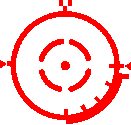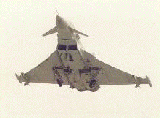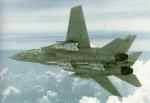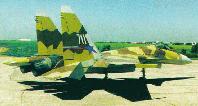It should be noted that as fighter airframes pile up flight hours and structural stress from G-force loading, they can often become important virtually-expendable planes detailed to the most dangerous missions. ( The F-4Gs which accompanied the F-117 on initial strikes of Baghdad were among the oldest F-4Es in service before their conversion to Wild Weasel SEAD configuration. )
The F-15E - which is the multi-role culmination of earlier A/A interceptors - is still "youthful and vigorous", and it is sure to remain in service through 2010, at least. |
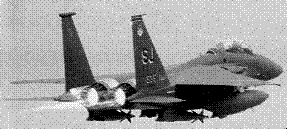 |
The lowly F-16 - a privately-admitted mistake of judgement - is present in such large numbers that it will remain active a long time, even if only among allies unwilling to pay for replacing them with something more capable and maintainable. Cautious attempts to have the Falcon take over the Wild Weasel role from the F-4Gs stretch the realm of credibility; miniaturization of ECM and missile-guidance equipment helps, but the little one-seater is clearly out of its element in this role. No matter how valiant or experienced the crewman, losses would be unacceptable; the US doesn't employ Kamikaze tactics.
Some important aircraft will not be seen above battlefields in the next century - and they aren't programmed to be replaced by anything which could fulfill their unique taskings: EF-111 and EA-6 Electronic Warfare planes, as well as the mighty A-10 tank-buster.
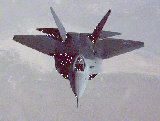 |
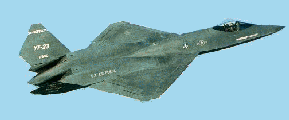 |
The YF-22 Raptor and the YF-23 Stealth Inteceptor are certain to be employed in some form or other in the next century. Both share extensive use of stealth techniques, using weapons bays instead of external pylons - and supercruise will allow them to sneak up quickly. The F-22 is going to production. I'll bet we see another incarnation for the F-23, though - perhaps as a USN craft replacing the F-14.
THE COMPETITION:
SU-37 - Besides the obvious vectored-thrust engine nozzles - which may permit some very unusual angles-of-attack, thus enabling very fancy manuevers - the weapons-system features visible here are also noteworthy. Much like earlier SU-XX fighters, the radome diameter indicates there is a capable, high-gain antenna dish behind it. ( The sort of thing mini-jets, like the US F-16s lack.)
The elongated pylon extending from the rear also displays a smaller radome, possibly containing a small medium-range search radar. Combine a rear-facing radar with a steerable phased-array scanning antenna dish up front, and this plane may be capable of 360-degree radar coverage - a fighter first ! ( There is a more ominous implication here, too - a very high-G vectored-thrust radar missile could be launched at a target BEHIND the SU-37...)
The smaller domes along the sides of the pylon are probably radar warning recievers - though these may just be blow-away covers for a flare/chaff dispenser.
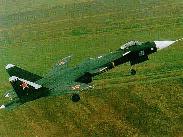
|
The S-37 is, at this time, purely a test bed for radical design changes. Like the US X-29, it has a backward-canted wing, which may produce more maneueverability at high speeds. |
S-37 - Unlike American test aircraft, this one also sports a full-size radar compartment/radome, and the same sort of rearward- facing domes as the SU-37. While these probably house ECM and radar-warning equipment, they also could contain tiny, short-range search radars.
One puzzling aspect of the photo is what appear to be engine auxiliary air doors on the backbone, just aft of the small canard wing. Why is extra air volume required in flight ? Either there are some very hot engines in this plane, or it is a very high-altitude aircraft.
